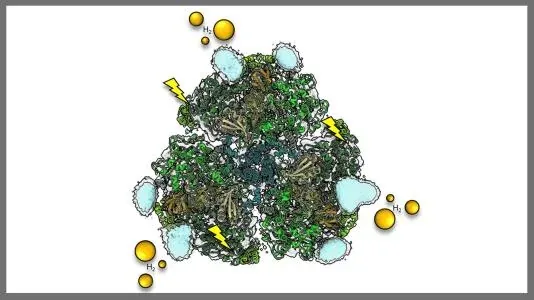
French Scientists Reflect on Their Ig Nobel Prize Triumphs: Science with a Twist
2024-12-17
Author: Sophie
In a delightful exploration of humor in research, CNRS, France's esteemed National Centre for Scientific Research, highlights the achievements of several French scientists who have graced the illustrious Ig Nobel Prizes. These awards celebrate unconventional scientific discoveries that make you laugh, then think.
Daniel Bonn: Physics and Playfulness
Renowned physicist Daniel Bonn, now a research director at the University of Amsterdam, expressed his fondness for the Ig Nobel Prize. He quipped, “This is the prize I always wanted!” Bonn is known for his whimsical yet insightful findings, including a study that demonstrated the impossibility of drowning in quicksand and his experiments to create the perfect sand for sandcastle building. His award-winning study involved the fascinating separation of sober and tipsy worms using chromatography. In his words, “We were doing things that we thought were important and that were funny at the same time.”
His research delves into “active” polymers, which are unique materials capable of self-propulsion and collective behavior. With their low cost and ease of maintenance, these polymers are perfect for experimentation. Bonn's method of manipulating alcohol levels in the worms allows scientists to mimic conditions of low temperatures, revealing how chromatography can effectively separate these polymers based on activity. Despite the originality of his work, securing funding poses challenges in the Netherlands, contrasting the creative freedom he experiences at CNRS in France.
Marie-Christine Cadiergues: Fleas, Dogs, and Cats
Another remarkable Ig Nobel laureate is Marie-Christine Cadiergues, whose infectious enthusiasm for her 2008 award reflects the lighter side of scientific inquiry. Her research, conducted during her doctoral studies in 2000, revealed that fleas on dogs leap better than those on cats. This knowledge, presented with a playful touch—she even adorned her office with a cartoon depicting the "Flea Olympics"—serves practical purposes in understanding the transmission of diseases carried by these pests. Cadiergues recalled the media whirlwind following her award in 2008, spending weeks engaging with journalists across various platforms, as public interest in the Ig Nobel Prize blossomed.
Marc-Antoine Fardin: The Liquid Cats Debate
Marc-Antoine Fardin, another notable winner from CNRS, was recognized in 2017 for his provocative research asking the question: “Are cats liquid or solid?” His work on the mechanics of cell tissues intersects with healing processes but gained additional fame for its humorous premise. Fardin's Ig Nobel Prize solidified his standing in the scientific community, and he values the award as much as any conventional honor. The unique nature of his research—often noted in CNRS evaluations—allowed him to break into broader discussions, thereby enhancing communication about science with the public.
The Impact of Ig Nobel Prizes on Science and Society
As these French scientists illustrate, the Ig Nobel Prizes shine a spotlight on the intersection of humor and serious inquiry, enticing a diverse audience while promoting scientific literacy. These playful explorations not only entertain but inspire a deeper appreciation for the quirky side of scientific research.
Stay tuned for more insights from the whimsical world of science! Who knows what humorous discoveries lie ahead? Don't forget to engage in the conversation and share your thoughts below!









 Brasil (PT)
Brasil (PT)
 Canada (EN)
Canada (EN)
 Chile (ES)
Chile (ES)
 España (ES)
España (ES)
 France (FR)
France (FR)
 Hong Kong (EN)
Hong Kong (EN)
 Italia (IT)
Italia (IT)
 日本 (JA)
日本 (JA)
 Magyarország (HU)
Magyarország (HU)
 Norge (NO)
Norge (NO)
 Polska (PL)
Polska (PL)
 Schweiz (DE)
Schweiz (DE)
 Singapore (EN)
Singapore (EN)
 Sverige (SV)
Sverige (SV)
 Suomi (FI)
Suomi (FI)
 Türkiye (TR)
Türkiye (TR)